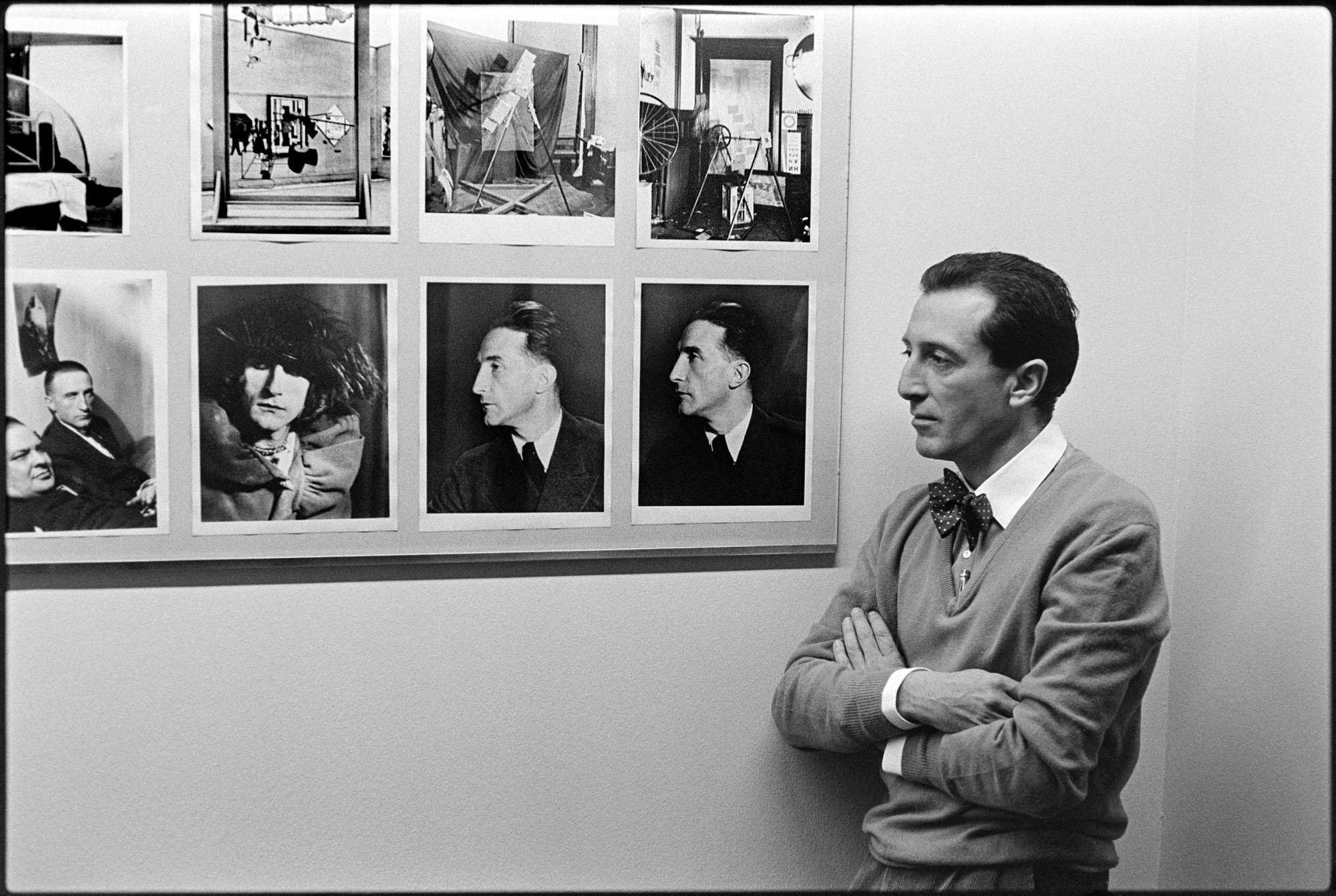The Autonomous Community of Madrid’s CA2M marks the start of spring by opening two exhibitions: Javier Utray and Nacho Criado

Picture: Utray con Duchamp. Javier Campano, 1984.
- Javier Utray is a crucial figure in the transition from the seventies to the eighties and in the aesthetics of postmodernism in Spain.
- Nacho Criado is one of Spain's leading artists of the second half of the twentieth century, winner of the National Prize for Plastic Arts in 2009.
March 25, 2021. - The Autonomous Community of Madrid’s CA2M Centro de Arte Dos de Mayo marks the start of spring with the opening of two exhibitions dedicated to Javier Utray, An anamorphic portrait, the artist's first retrospective, and Nacho Criado, Not the voice crying in the wilderness.
Javier Utray (Madrid 1945 - Madrid 2008) was an architect, writer, painter, visual artist, musician/composer, performer and, essentially, a leading cultural force who played a decisive role in shaping Spain's art scene from the 1970s until his premature death.
Curated by Mariano Navarro and Andrés Mengs, this exhibition aspires to serve as a homage and memorial to this multifaceted artist. It also aims to highlight the significance and uniqueness of Utray’s creative personality.
It is important to stress the fact that he produced his most intense work at a pivotal moment in modern Spanish history, when visual artists, musicians, writers and the media played leading roles in their separate ways yet with a shared purpose.
The exhibition is divided into four sections, though these are far from being disparate. Javier Utray described himself as an architect, and the first section is dedicated to his initial creative undertakings in architecture.
The second section brings together works by Utray and his generational colleagues produced in the 1970s and early 1980s. This chapter also includes the reconstruction of one of the artist’s important pieces, Pantheon pentamarceliano (1977), censored in its day, and destroyed by Utray himself during a performance on the day of its inauguration, as well as objects and documents from Utray’s version of Rrose Sélavy in a segment devoted to his profound relationship with Marcel Duchamp and his work.
The third covers Javier Utray’s important editorial work in the eighties. On display are work materials from the artist’s archive along with videos, texts and images. There is also a portion dedicated to his poetry, his written texts and his essays on art and artists.
The fourth and final section is dedicated exclusively to Javier Utray’s later visual art, which, from the late 1980s until his death in 2008, consistently stemmed from the same conceptual principles.
Nacho Criado (Mengíbar, Jaén, 1943 - Madrid, 2010) is one of the leading Spanish artists of the second half of the twentieth century, Gold Medal of Fine Arts in 2008 and National Prize of Plastic Arts in 2009.
One of the lines of work undertaken by CA2M is to revitalise the history of contemporary art exhibitions in Madrid. For this one-piece exhibition by Nacho Criado, we focus on Madrid: Space of Interferences, curated in 1990 by the art theorist and historian Javier Maderuelo (Madrid, 1950) for the Círculo de Bellas Artes.
This exhibition featured an intergenerational group of artists including Darío Corbeira, Marcelo Expósito, Francisco Felipe, Gabriel Fernández Corchero, Juan Hidalgo, Concha Jerez, Eva Lootz, Sara Rosenberg, Adolfo Schlosser and Isidoro Valcárcel Medina.
Maderuelo’s intention was to “present the current state of aesthetic ideas” in an exhibition, involving pieces created specifically to fit the spaces of the Círculo de Bellas Artes in mind. The catalogue stated: “An installation is, in essence, an interference in a space.”
Not the voice crying in the wilderness was the interference devised by the artist Nacho Criado for that exhibition. The piece we are showing at the CA2M is the reconstruction made for its author’s retrospective at the Reina Sofía National Art Museum in 2012, entitled Collaborating Agents.
This monumental iron, sand and glass installation originally made reference to the Círculo de Bellas Artes’ ballroom dome. Its reconstruction in the CA2M’s atrium aims to create new affinities, unprecedented readings of its building and unthought-of relationships that can generate other exhibition geopolitics to come. With its development, the CA2M has acquired the piece Eccentricity from 1967, a pioneering Minimalism piece in Spain, which makes up for its absence in the Museum's Collection until now.
For further information visit www.ca2m.org
Comunicación CA2M:
Vanessa Pollán Palomo
Jefa de servicio de Comunicación
Móvil: 689 616 859
prensa.ca2m@madrid.org